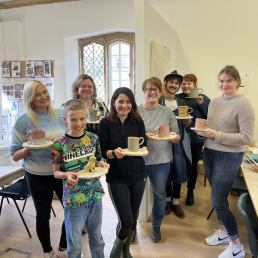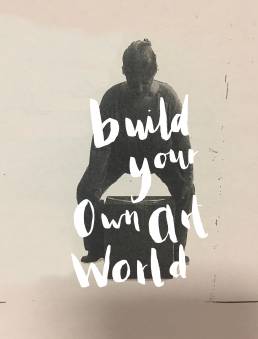
Build Your Own Art World brought together artists, curators and cultural producers in rural Somerset to consider: What does it mean to be artist-led? Is there an alternative to a global gallery system? How do you build your own art world?
The programme included contributions for an international panel of artists and organisers, representing a range of artist-run projects. Ad de Jong visited from Amsterdam to talk about the formation of iconic artist-run space W139 and Karl Englanddiscussed Sluice, an London artist-run platform which currently comprises a biennial, expo, magazine and gallery. Plymouth collaborative duoLOW PROFILE, Cardiff arts space Spit & Sawdust and Bristol-based writer and singer Phil Owen, offered interventions and provocations exploring artist-led practice.
The event was designed for participants who are experienced in or curious about the artist-led as an alternative, with the seminar offering opportunities to meet collaborators, break bread and explore collective strategies for building your own art world.
Friday 16 March 2018
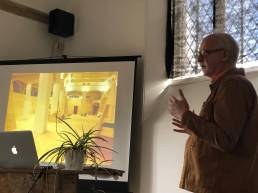
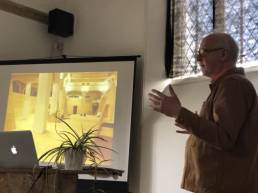
Ad de Jong
How to build your own art world is a topic at the heart of Ad de Jong’s art and other practices. W139 was founded in 1979, in central Amsterdam by a group of young artists including Ad de Jong, and presented an alternative to the collections and exhibitions on show at the city’s museums and commercial galleries. Over 38 years, W139 evolved from anti-establishment squat into a artist-run platform for contemporary art.
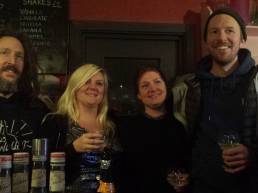
Nia Metcalfe and Becca Thomas will joined us from Spit & Sawdust, a multi-aspect community space in Cardiff, comprised of an indoor skate park, café, artist studios and creative programme. Opening in April 2014, their ambition was to create a welcoming cultural space that would cater for artists, skaters/riders and people of neighbouring areas. They run as a not-for-profit social enterprise.
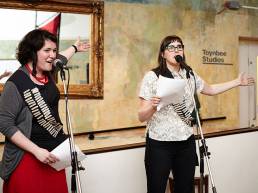
LOW PROFILE is a collaboration between artists Rachel Dobbs (IRL) and Hannah Rose (née Jones) (UK). They have been working in collaboration since 2003 and are based in Plymouth. Their work is informed by (and often made in response to) specific contexts and situations. At its heart, LOW PROFILE’s practice is performative, quietly political and interested in the potential of paying attention as a transformative action.
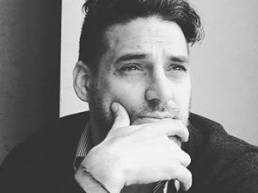
Karl England is an artist, and mostly people ask him if he’s made any art recently whilst looking right at it. Mostly this seems like a good state of affairs. Karl’s work is about creating platforms which can then be colonised. Karl lives and works in London, and he founded Sluice in 2011, an artist-run platform for artist-run spaces which currently organises a biennial, and expo, a magazine and a gallery.
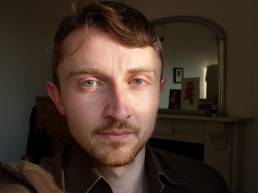
Phil Owen is a writer and singer based in Bristol, interested in voice, place and heritage. With Megan Wakefield he ran Tertulia, a salon event for people working with language, which presented the work of over 50 artists at venues across the southwest. He works part-time as Archive Curator at Arnolfini.
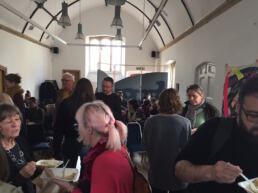
Dissatisfied with the art world? Then build your own. Review by Julie McCalden for a-n
Fast forward 40 years with studio time at a premium and experimentation feeling like a luxury – could we say the same of artists today? While commitment, conviction and boundless energy were all highlighted as characteristics of art practice and particularly artist-led projects, for those fortunate enough to have one, a little bit of a safety net (no longer provided by the state) also goes a long way.
Karl England, artist, stay-at-home dad and founder of Sluice Biennial (formerly Sluice Art Fair) was candid about the existence of the project being enabled, indirectly, by his wife. “Sluice is not sustainable. I am not sustainable,” he refreshingly declared.
From its conception in 2011, Sluice has been about platforming artist-led activities. Originally conceived as a critique of commercial art fairs, Sluice provided space for artist-led projects to show work and endorsed the idea that artist-led activity is not a path, but a destination.
Funded through charging projects for stands at its events, Sluice – which now also publishes Sluice magazine – has never received public funding and is run on a voluntary basis. Although they have applied for funding in the past, not relying on public funds could be considered a strength in affording it the freedom to operate away from funders’ agendas. “It’s almost inevitable,” England reflected, “that an artist-led project with any longevity will become a part of the establishment.”
This experience is one that de Jong could be said to have had in reverse, when in 2012 W139’s funding was withdrawn following its decision to stop recruiting curators to run the space and instead hand back control to artists.
W139 grew up alongside the more institutional spaces of the art world. Originally it had a rolling biennial directorship of artists but as it became increasingly renowned, well-known international curators began applying. The curators were career focused and for many years they brought famous artists into the gallery.
Without at first realising it, the space which they had once secured and renovated for artists and for Amsterdam didn’t work for artists or the city anymore. So they decided to stop recruiting curators and their funders were not supportive of the decision. But they stood by it, trying out a new model where one group of artists hands on the baton to the next.
W139 lost its funding because they wanted to do things in an innovative way that didn’t fit into existing structures – which tend to be risk averse and encourage professionalisation. More recently, this point was forcefully made by the committee of Glasgow’s artist-run Transmission Gallery, in response to losing its status as one of Creative Scotland’s regularly funded organisations,
If we are to challenge the system we must resist the behaviours the art world encourages us to adopt. But in a system where something as fundamental as funding, for example, is often dependent on a proven track record of professionalism – project delivery, managing budgets, etc – it’s easier said than done.
To paraphrase some tips from de Jong: “Don’t try to be famous. Don’t paint the walls white. Don’t try to be too professional – once you start doing that you become a PR marketer. You have to accept everything around you as it is – but look at it again. Don’t be against the art world but try to revive it.
“When you make art you are not alone – there are always others there in your head – influences, restrictions, constraints, curators, audiences, partners, family etc. Don’t be reactive. You need to forget them and make the work you want to make – people understand that and can relate to it.”
Build Your Own Art World was held at OSR Projects, West Coker, Somerset on Friday 16 March 2018
Images:
Make Your Own Art World symposium, OSR Projects. Photos: Julie McCalden

The Build Your Own Art World symposium provided subtle ideas, inclinations and gestures on how to subvert current models, and ways to operate within them whilst adopting a more collaborative, generous and inclusive practices, built on experimentation, risk-taking and collective action, encouraging us all to devise our own rules.




